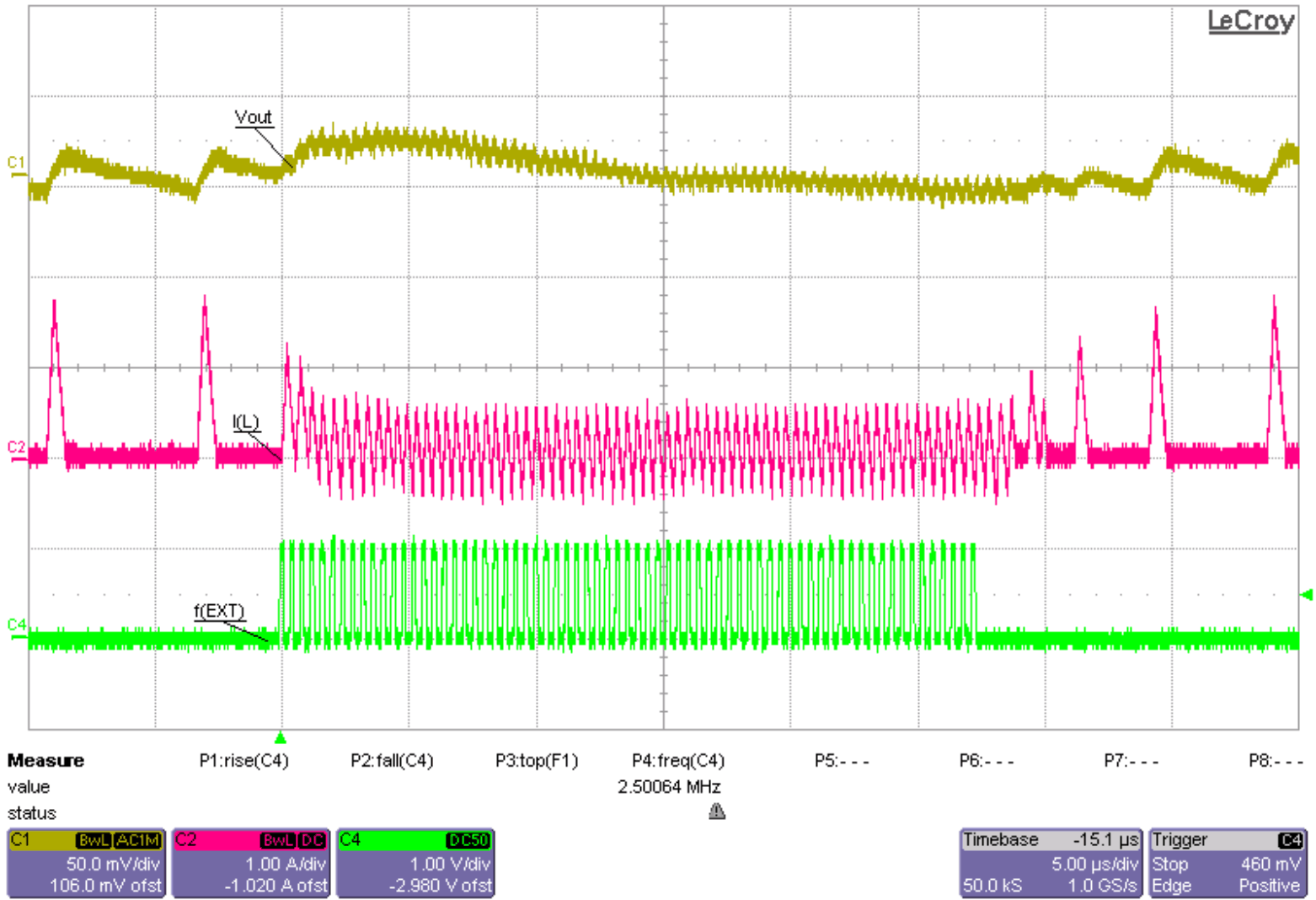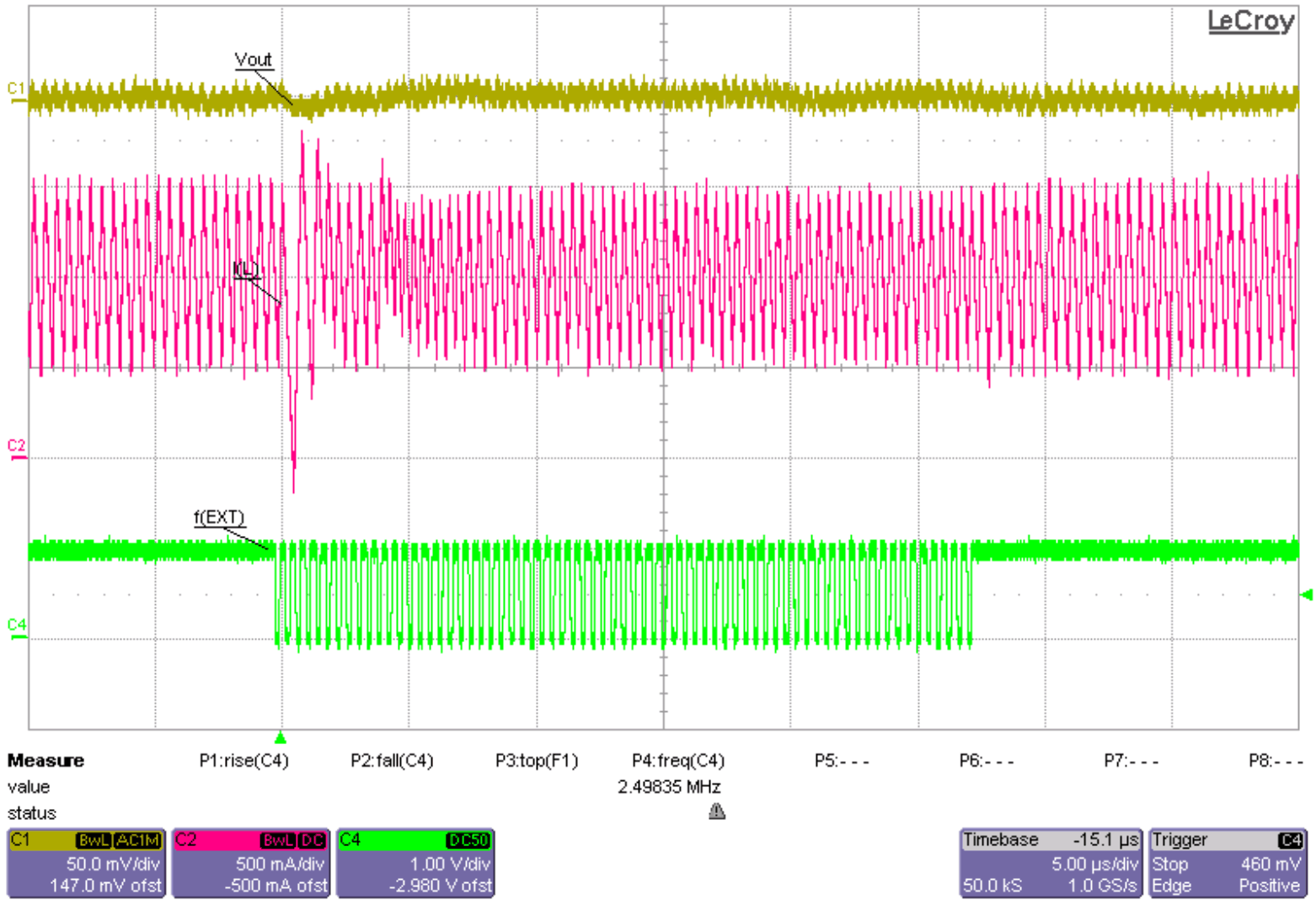ZHCSKB4C September 2019 – December 2024 TPSM82810 , TPSM82813
PRODMIX
- 1
- 1 特性
- 2 应用
- 3 说明
- 4 Device Comparison Table
- 5 Pin Configuration and Functions
- 6 Specifications
- 7 Parameter Measurement Information
- 8 Detailed Description
- 9 Application and Implementation
- 10Device and Documentation Support
- 11Revision History
- 12Mechanical, Packaging, and Orderable Information
封装选项
请参考 PDF 数据表获取器件具体的封装图。
机械数据 (封装 | 引脚)
- VCA|13
- SIL|14
散热焊盘机械数据 (封装 | 引脚)
订购信息
9.3.2 Synchronizing to an External Clock
The TPSM8281x can be synchronized by applying a clock on the MODE/SYNC pin. There is no need for any additional circuitry. See Figure 9-35. The clock can be applied, changed, and removed during operation. The value of the RCF resistor is recommended to be chosen such that the internally defined frequency and the externally-applied frequency are close to each other to have a fast settling time to the external clock. Synchronizing to a clock is not possible, if the COMP/FSET pin is connected to Vin or GND. Figure 9-36 and Figure 9-37 show the external clock being applied and removed. When an external clock is applied, the device operates in PWM mode.
 Figure 9-35 Frequency
Synchronization
Figure 9-35 Frequency
Synchronization
| VIN = 5V | RCF = 8.06kΩ | IOUT = 0.1A |
| VOUT = 1.8V | fEXT = 2.5MHz | |

| VIN = 5V | RCF = 8.06kΩ | IOUT = 1A |
| VOUT = 1.8V | fEXT = 2.5MHz | |